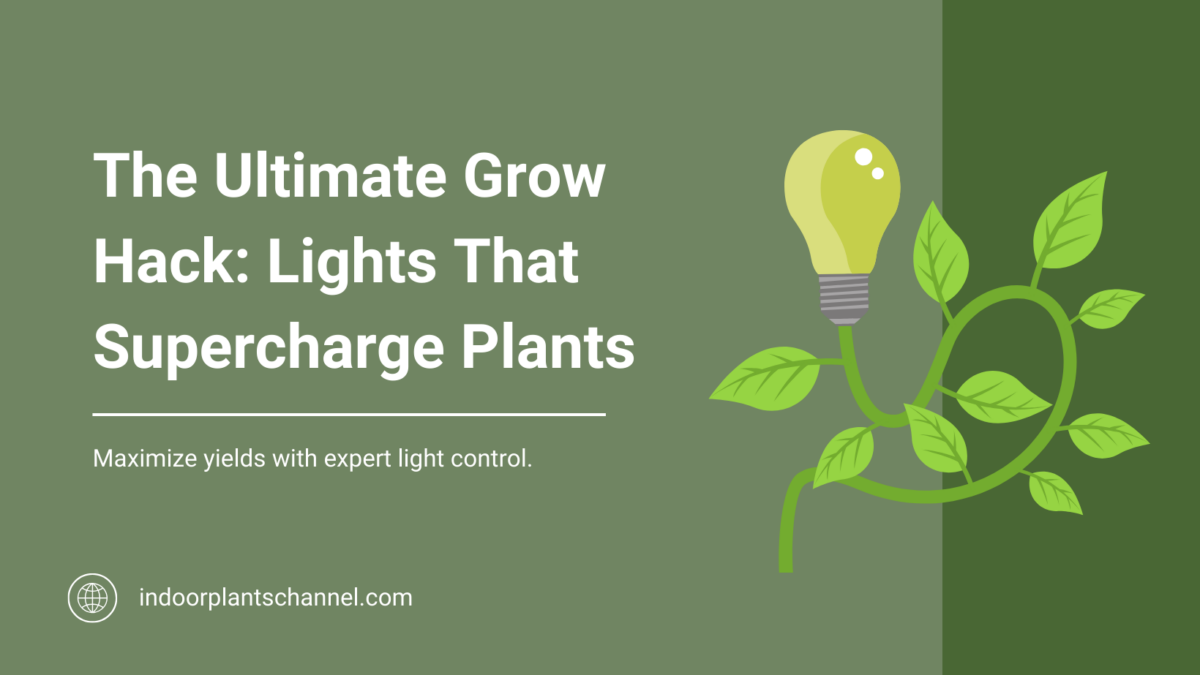Indoor gardening has shattered the boundaries of traditional agriculture, yet one surprising truth remains: the quality of your indoor grow lights can matter more than the quality of your soil. In fact, studies show that optimizing light spectra can increase plant productivity by up to 40%, a figure that’s reshaping how we think about cultivating food and greenery indoors. But why does this matter now?
With urbanization accelerating and arable land shrinking, indoor grow lights aren’t just tools for hobbyists—they’re key to solving global food insecurity and environmental challenges.
Here’s the catch: not all grow lights are created equal, and choosing the wrong one can mean the difference between thriving plants and wasted effort. How do you navigate the maze of options to find the perfect setup for your needs? This guide will unravel the science, strategy, and subtle art of selecting and setting up grow lights, connecting your indoor garden to a brighter, greener future.
The Role of Grow Lights in Indoor Gardening
What many indoor gardeners overlook is how grow lights don’t just replace sunlight—they redefine it. Unlike natural sunlight, which plants must adapt to, grow lights allow you to tailor the light spectrum, intensity, and duration to meet the exact needs of your plants.
For instance, blue light (400-500nm) promotes robust vegetative growth, while red light (600-700nm) is critical for flowering and fruiting. This level of control is a game-changer, especially for urban growers working in constrained spaces or climates with limited natural light.
The interplay between light and plant hormones like auxins and gibberellins. Research shows that specific wavelengths can trigger hormonal responses, influencing everything from root development to flowering cycles. This means your choice of grow light doesn’t just affect growth—it shapes the plant’s entire physiology.
For real-world applications, consider vertical farming systems. By optimizing light spectra for leafy greens, growers have achieved faster growth cycles and higher nutrient density. The takeaway? Treat grow lights not as a substitute for sunlight but as a precision tool for maximizing plant potential.
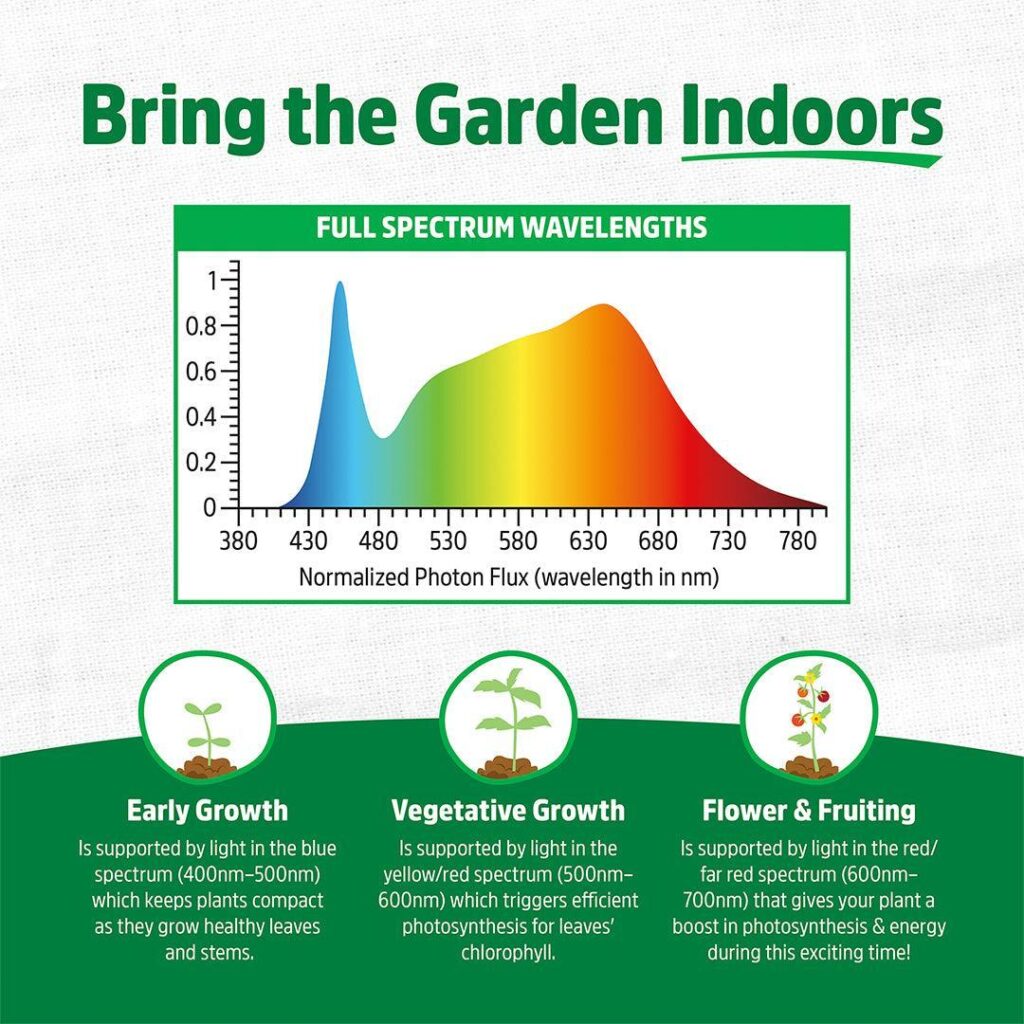
Understanding Plant Light Needs
Daily light integral (DLI)—the total amount of photosynthetically active radiation (PAR) a plant receives in a day. DLI varies by species and growth stage; for example, leafy greens thrive with a DLI of 12-17 mol/m²/day, while fruiting plants like tomatoes may require 20-30 mol/m²/day. By understanding DLI, growers can fine-tune light intensity and photoperiod to optimize plant health and yield.
A practical application of this is seen in controlled environments like greenhouses or grow tents. Using sensors to measure PAR and adjusting grow light settings ensures plants receive their ideal DLI, even in low-light seasons. This approach not only boosts growth but also reduces energy waste.
Studies suggest that intermittent lighting—short bursts of high-intensity light—can achieve similar results to continuous lighting, challenging traditional methods. For growers, this opens doors to energy-efficient strategies without compromising productivity.
Benefits of Grow Lights over Natural Sunlight
Unlike natural sunlight, which varies in intensity and spectrum based on time, weather, and geography, grow lights allow precise control over wavelengths. For instance, blue light (400-500nm) can be emphasized during vegetative growth, while red light (600-700nm) can dominate during flowering and fruiting stages, optimizing plant development at every phase.
This control has real-world implications in urban farming and vertical agriculture, where natural sunlight is limited or inconsistent. By fine-tuning light spectra, growers can enhance nutrient density, accelerate growth cycles, and even influence secondary metabolites like flavor and aroma in herbs and fruits.
Ability to extend photoperiods beyond natural daylight hours. This approach, when managed carefully, can increase yields without overstressing plants, offering a scalable framework for year-round production in controlled environments.
Fundamentals of Light and Plant Growth
Plants interpret light through photosynthetically active radiation (PAR), which spans wavelengths from 400 to 700 nanometers. Blue light drives vegetative growth by promoting chlorophyll production, while red light triggers flowering and fruiting. However, recent studies reveal that green light, often overlooked, penetrates deeper into plant canopies, enhancing photosynthesis in lower leaves.
Exceeding a plant’s Daily Light Integral (DLI) can cause photoinhibition, reducing efficiency. Understanding these nuances allows growers to balance light intensity and duration for optimal results.
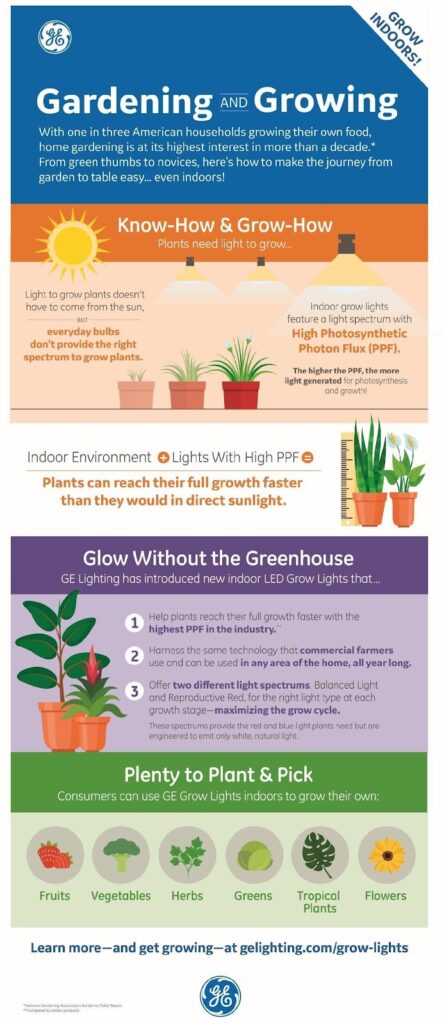
Photosynthesis and the Electromagnetic Spectrum
Photosynthesis hinges on the precise interaction between light wavelengths and chlorophyll molecules. While red and blue light dominate the conversation, recent research highlights the synergistic role of far-red light (700–750 nm). Far-red extends the photosynthetic range by activating phytochrome pigments, which regulate energy distribution across leaves. This effect, known as the “Emerson Enhancement,” boosts photosynthetic efficiency when far-red is combined with red light.
In practice, growers can leverage this by integrating far-red LEDs into their lighting systems. For instance, tomato growers using far-red supplementation have reported up to 20% higher yields, particularly in low-light conditions. This approach also shortens flowering cycles, offering a competitive edge in commercial production.
Far-red ability to penetrate dense canopies and stimulate lower-leaf photosynthesis challenges this notion. By embracing a broader spectrum, growers can unlock untapped potential in plant productivity and energy efficiency.
Photosynthetically Active Radiation (PAR)
While most growers focus on total light output, the quality of photon distribution across the 400–700 nm range is equally vital. Studies reveal that photons in the 600–630 nm range (red light) are 20–30% more effective for photosynthesis than those in the 400–540 nm range (blue light). This efficiency difference underscores the importance of tailoring light spectra to specific plant needs.
In real-world applications, precision lighting systems like LED arrays allow growers to fine-tune PAR delivery. For example, leafy greens grown under red-dominant spectra exhibit faster biomass accumulation, while blue light enhances chlorophyll concentration. This balance can be optimized further by integrating sensors to monitor daily light integral (DLI) and adjust light intensity dynamically.
By leveraging spectral customization, growers can achieve higher yields, improved nutrient profiles, and energy savings simultaneously.
Light Intensity, Duration, and Photoperiodism
Prolonged light exposure beyond a plant’s optimal photoperiod can trigger stress responses, such as bolting in spinach or lettuce. This phenomenon, tied to hormonal shifts like increased gibberellin production, highlights the importance of matching light duration to species-specific needs.
A 16-hour light/2-hour dark cycle has been shown to boost lettuce yields by 30% compared to traditional 16-hour light/8-hour dark setups. This approach leverages shorter dark periods to maintain photosynthetic activity while minimizing energy waste.
Low-intensity lighting during extended photoperiods can prevent photoinhibition while still meeting the daily light integral (DLI). By combining these strategies, growers can fine-tune light schedules to optimize growth, reduce energy costs, and even manipulate flowering times for market demands.
Effects of Light Spectrum on Plant Development
Far-red light, often dismissed as non-essential, enhances photosynthetic efficiency by activating the Emerson Effect, where photosystems work more effectively under dual-wavelength exposure. This synergy accelerates flowering cycles in crops like tomatoes, reducing time-to-harvest by up to 20%.
In practice, growers can integrate far-red LEDs into their lighting systems to optimize energy use and boost yields. For example, a 4:1 red-to-far-red ratio has been shown to improve biomass accumulation without compromising energy efficiency. This approach also influences phytochrome-mediated responses, such as stem elongation, which can be advantageous in vertical farming setups.
Recent studies reveal that green light, previously considered negligible, penetrates deeper into plant canopies. This insight opens doors to multi-layered lighting strategies, ensuring uniform growth even in dense crop arrangements.
Types of Indoor Grow Lights
When it comes to indoor grow lights, the choice isn’t just about brightness—it’s about tailoring light to plant needs. LED grow lights, for instance, dominate the market due to their energy efficiency and customizable spectra. A case study on vertical farms in Singapore revealed that LED systems reduced energy costs by 40% while boosting yields by 25%, thanks to precise wavelength targeting.
In contrast, HID lights (High-Intensity Discharge) offer intense light output but at the cost of excessive heat. This makes them ideal for large-scale operations but less practical for small indoor setups. Think of HID lights as a high-performance sports car: powerful but requiring significant maintenance and cooling systems.
Though being phased out, fluorescent lights remain effective for seedlings and low-light plants. Their even light distribution is like a gentle rain—perfect for nurturing young growth without overwhelming it.
Fluorescent Lights: T5, T8, and Compact Fluorescent Lamps (CFL)
Fluorescent lights, particularly T5 bulbs, excel in controlled environments where precision matters. Their high-output design delivers a balanced spectrum, making them ideal for seedlings and leafy greens. A 2008 HortScience study highlighted that T5 bulbs outperform older T8 and T12 models in energy efficiency and light intensity, offering up to 20% more usable light for plants.
Compact Fluorescent Lamps (CFLs) bring versatility to smaller setups. Their compact size allows targeted lighting for individual plants, reducing energy waste. Think of CFLs as the Swiss Army knife of grow lights—adaptable, efficient, and perfect for tight spaces.
Most gardeners replace T5 tubes annually to maintain optimal growth conditions. Pairing these lights with automatic timers (16-18 hours daily) can further enhance plant health while minimizing energy costs, bridging the gap between affordability and performance.
High-Intensity Discharge (HID) Lights: Metal Halide (MH) and High-Pressure Sodium (HPS)
Metal Halide (MH) lights emit a blue-heavy spectrum, which promotes robust vegetative growth by enhancing chlorophyll production. Conversely, High-Pressure Sodium (HPS) lights excel in the flowering stage, with their red-orange spectrum driving photosynthesis and boosting yields. This dual-spectrum approach is why many commercial growers pair MH and HPS bulbs for full-cycle cultivation.
Studies show that HPS bulbs lose up to 20% of their intensity after 10,000 hours, directly affecting plant productivity. Regular replacement schedules are essential to maintain consistent output.
For real-world applications, combining HID lights with reflective hoods can maximize light distribution, reducing energy waste. Additionally, integrating digital ballasts allows precise control over intensity, offering a cost-effective framework for scaling operations while maintaining plant health.
Light Emitting Diode (LED) Grow Lights
Unlike traditional lights, LEDs can emit targeted wavelengths, such as blue for vegetative growth and red for flowering. This flexibility not only optimizes photosynthesis but also enables growers to experiment with unique light recipes to enhance secondary metabolite production, such as terpenes in herbs or antioxidants in leafy greens.
While LEDs produce less heat, their high intensity can still cause photobleaching if placed too close to plants. Using dimmable LEDs or adjustable hanging systems ensures proper light distribution, reducing stress and maximizing yields.
In practice, integrating LEDs with smart controllers offers real-time adjustments based on plant needs. This approach bridges horticulture with IoT technology, paving the way for data-driven cultivation strategies that improve efficiency and sustainability in both small-scale and commercial setups.
Induction and Plasma Grow Lights
Induction and plasma grow lights excel in delivering full-spectrum light, closely mimicking natural sunlight. This makes them particularly effective for crops requiring balanced light across all growth stages. Plasma lights, for instance, emit ultraviolet (UV) wavelengths, which can enhance plant resilience by triggering secondary metabolite production, such as flavonoids and phenolics, often linked to pest resistance and improved flavor profiles.
With lifespans exceeding 50,000 hours, they reduce maintenance costs and downtime in commercial setups. Their low heat output also minimizes the need for extensive cooling systems, making them energy-efficient for temperature-sensitive environments like vertical farms.
For growers seeking long-term ROI, pairing these lights with precision light sensors can optimize energy use and ensure consistent yields. This approach integrates seamlessly with sustainable farming practices, offering a scalable solution for future-focused agriculture.
Comparative Analysis of Grow Light Technologies
Photon efficacy—the measure of usable light (PPF) per watt of energy consumed. LEDs dominate this metric, delivering up to 3.0 µmol/J, compared to HID lights, which average around 1.7 µmol/J. This efficiency not only reduces operational costs but also minimizes heat output, allowing growers to allocate more resources to plant health rather than cooling systems.
Real-world applications highlight the versatility of LEDs in multi-tier vertical farming, where low heat and customizable spectra are essential. Conversely, HID lights, while less efficient, remain favored in large-scale operations requiring high-intensity light for dense canopies, thanks to their deep penetration capabilities.
HID bulbs lose up to 30% of their output within a year, while LEDs maintain consistent performance for over 50,000 hours. For growers, this underscores the importance of balancing upfront costs with long-term reliability and energy savings.
Selecting the Right Grow Light System
Choosing the right grow light system is like tailoring a suit—it must fit your plants, space, and goals perfectly. For instance, LED systems excel in small, enclosed spaces due to their low heat output and customizable spectra, making them ideal for urban gardeners growing herbs or leafy greens. On the other hand, HID lights, with their intense output, are better suited for large-scale operations where deep canopy penetration is critical, such as cultivating fruiting plants like tomatoes.
Photon efficacy—measured in µmol/J—matters more. Studies show that LEDs, with up to 3.0 µmol/J, outperform traditional HID systems in energy efficiency and long-term cost savings.
Expert growers often recommend pairing reflective materials like mylar with your system to maximize light distribution. Think of it as adding mirrors to amplify sunlight in a dim room—small adjustments, big impact.
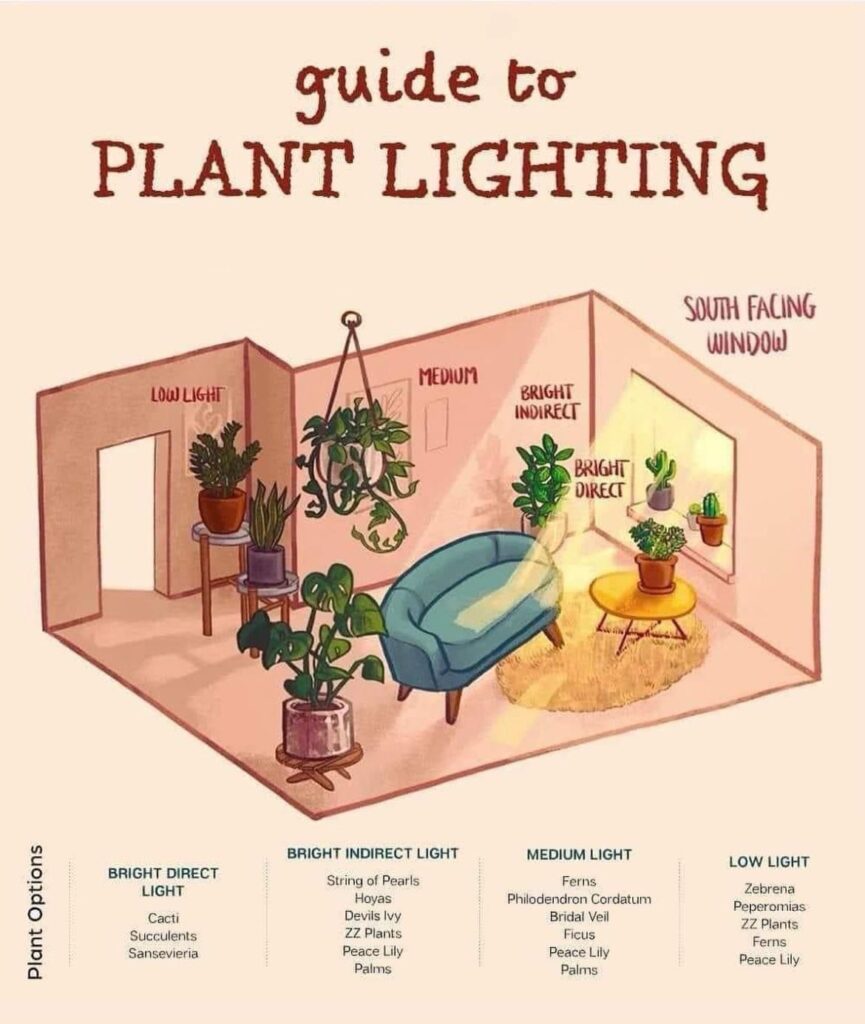
Assessing Plant Types and Growth Stages
Understanding your plant’s lifecycle is like decoding its language—each stage has unique light demands. For example, seedlings thrive under blue-dominant light (400–500 nm), which promotes compact, sturdy growth. In contrast, flowering plants require red-heavy spectra (600–700 nm) to maximize bloom density and yield. Ignoring these nuances can lead to leggy stems or underdeveloped flowers, wasting both time and energy.
A study on tomato cultivation found that increasing the red-to-blue ratio during flowering boosted fruit yield by 20%. Yet, overloading red light during vegetative growth caused weak stems, proving that balance is key.
The red/far-red ratio influences germination and stem elongation, making it critical for crops like lettuce. To optimize, consider dynamic lighting systems that adjust spectra as plants mature. Think of it as shifting gears in a car—precision timing ensures peak performance.
Calculating Light Requirements: Lumens, Watts, and PPFD
When calculating light requirements, PPFD (photosynthetic photon flux density) is the gold standard, yet many growers still rely on lumens or watts. Lumens measure light visible to humans, not plants, while watts only indicate energy consumption. This disconnect often leads to underperforming setups, especially for high-yield crops like cannabis or tomatoes.
A practical framework involves converting lumens to PPFD using manufacturer-provided conversion factors. For instance, dividing lumens by 60 offers a rough PPF estimate, but accuracy improves with tools like light meters calibrated for specific spectra. Real-world growers using this approach report up to 15% higher yields by fine-tuning light placement and intensity.
Even with optimal PPFD, uneven distribution can stunt growth. Solutions like reflective surfaces or multi-bar LED systems ensure consistent coverage, bridging the gap between theoretical calculations and real-world success.
Spectrum Considerations: Full Spectrum vs. Targeted Spectrum
While full-spectrum lights mimic natural sunlight, providing a broad range of wavelengths, targeted-spectrum systems focus on specific growth phases, such as blue light for vegetative growth or red light for flowering. However, plants evolved under dynamic light conditions, and static spectra may limit their potential.
Emerging research highlights the benefits of dynamic spectrum tuning, where growers adjust light ratios in real-time. For example, increasing far-red wavelengths during late flowering can accelerate maturation and boost yields by up to 20%, as shown in controlled trials with tomatoes. This approach bridges the gap between full-spectrum’s versatility and targeted-spectrum’s precision.
Overloading plants with a single wavelength can reduce efficiency. By integrating adaptive lighting systems, growers can optimize energy use while enhancing plant health, paving the way for more sustainable indoor gardening practices.
Energy Efficiency and Operational Costs
High-efficacy LED grow lights, for instance, convert more electricity into usable light for photosynthesis, reducing waste. This not only lowers energy bills but also minimizes heat output, cutting cooling costs—a significant operational expense in indoor gardening.
A commercial grower using LEDs with 2.8 μmol/J efficacy reported a 40% reduction in electricity costs compared to traditional HID systems. Additionally, the lower heat allowed for smaller HVAC systems, saving thousands annually in infrastructure expenses.
Beyond a certain point, the cost of advanced diodes outweighs energy savings. Instead, growers should focus on smart scheduling—using timers and dimmers to match light intensity with plant needs. This approach balances upfront investment with long-term savings, creating a scalable framework for sustainable operations.
Budgeting and Return on Investment
While LEDs often have a higher upfront cost, their extended lifespan—up to 50,000 hours—eliminates frequent bulb replacements, a recurring expense with HID systems. For example, replacing HPS bulbs every 10,000 hours can cost a commercial grower over $20,000 annually in a 300-light setup, compared to zero replacement costs for LEDs over the same period.
In regions with high electricity rates, such as Hawaii ($0.31/kWh), the energy savings from LEDs can offset their initial cost within two years. Conversely, in low-cost regions like Louisiana ($0.07/kWh), growers might prioritize hybrid systems, combining LEDs for efficiency and HIDs for affordability.
To maximize ROI, consider scalable investments. Start with LEDs in high-demand areas (e.g., flowering zones) and expand as savings accumulate. This phased approach balances budget constraints with long-term profitability.
Setting Up Your Grow Light Environment
Think of your grow light environment as a finely tuned ecosystem. Positioning your lights for even coverage. Studies show that uneven light distribution can reduce yields by up to 30%. Using reflective materials like mylar or white walls ensures light reaches every leaf, minimizing shadows and maximizing photosynthesis.
While LEDs emit less heat than HID systems, even small temperature fluctuations can stress plants. For instance, a 5°F increase above optimal levels can slow growth by 20%. Installing fans or ventilation systems keeps temperatures stable, creating a stress-free environment for your plants.
Timers and smart controllers eliminate guesswork, ensuring consistent light cycles. Expert growers often compare this to setting a thermostat—it’s about precision, not effort. By automating, you free up time while maintaining the perfect balance of light, heat, and duration for thriving plants.
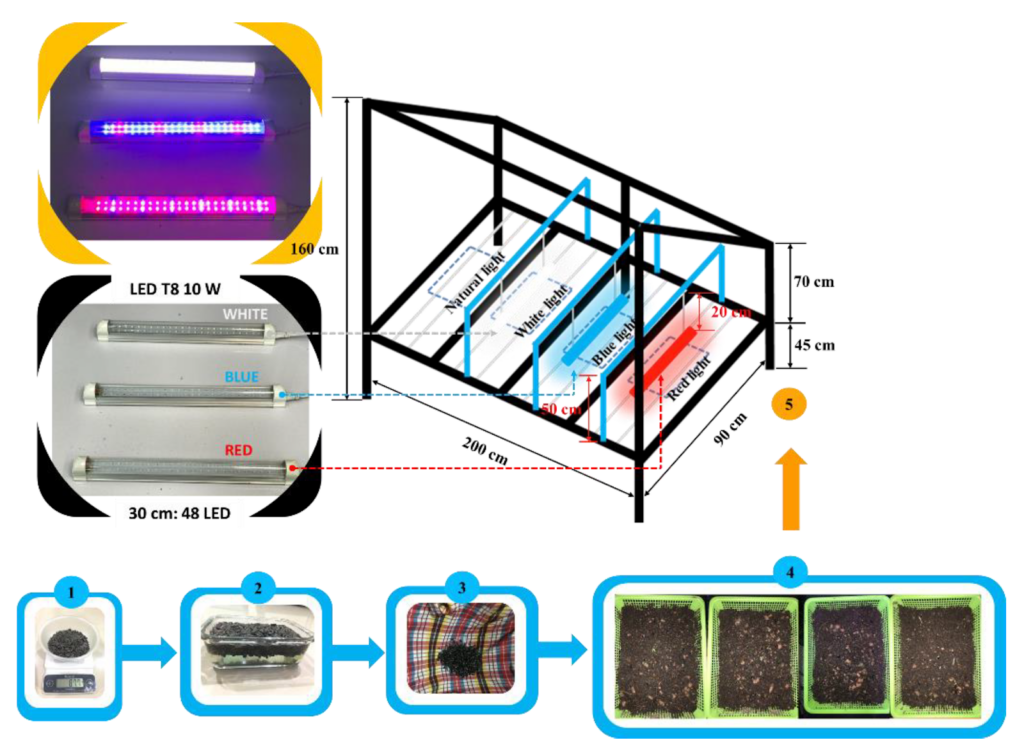
Designing the Grow Space: Space Planning and Layout
When planning your grow space, verticality is your secret weapon. Multi-tiered setups, common in vertical farming, can increase yield per square foot by up to 200%. However, stacking plants requires precise light placement to avoid shading lower tiers. Using adjustable LED panels ensures uniform light penetration, even in dense arrangements.
Poor ventilation in tightly packed spaces can lead to hotspots and humidity pockets, creating a breeding ground for mold. Cross-ventilation, combined with oscillating fans, keeps air moving and prevents these issues. Think of it as creating a microclimate where every plant gets its share of fresh air.
A cramped layout might maximize plant count but will cost you in accessibility. Experts recommend at least 18 inches of clearance for pruning and inspections. This balance between density and functionality ensures a productive, manageable grow space.
Optimal Light Placement and Hanging Techniques
Plants grow rapidly during vegetative and flowering stages, and fixed light setups often lead to uneven light distribution or light burn. Using adjustable pulley systems allows you to fine-tune the distance between the canopy and the light source, maintaining the ideal PPFD (Photosynthetic Photon Flux Density) for each growth phase.
While most growers focus on overhead placement, angling lights at 45 degrees can enhance canopy penetration, especially in dense setups. This technique mimics the sun’s natural trajectory, ensuring lower leaves receive sufficient light, which boosts photosynthesis and overall plant health.
Mylar or white walls can redirect stray photons back to the plants, reducing energy waste. Pairing this with strategic light placement creates a synergistic effect, maximizing growth while minimizing operational costs.
Implementing Reflectors and Light Distribution
Parabolic and wing-style reflectors, for instance, direct light more evenly across the canopy, reducing hotspots that can stress plants. This ensures that every leaf, from the top to the lower canopy, receives adequate light for photosynthesis, improving overall growth uniformity.
Highly reflective surfaces like aluminum-coated Mylar can reflect up to 95% of light, significantly enhancing photon efficiency. In contrast, cheaper materials may scatter light unevenly, leading to wasted energy and suboptimal plant performance. Pairing high-quality reflectors with full-spectrum LEDs can amplify their effectiveness, especially in multi-tier setups.
Innovative designs like adjustable reflectors allow growers to fine-tune light angles based on plant density and growth stage. This adaptability not only maximizes light use efficiency but also minimizes energy costs, offering a scalable framework for both hobbyists and commercial growers.
Ventilation, Cooling, and Heat Management
Inline fans paired with oscillating fans create a continuous air exchange, preventing heat pockets near grow lights. This not only stabilizes temperatures but also strengthens plant stems by mimicking natural wind conditions, a critical factor for robust growth.
Heat sinks and active cooling in LED systems deserve special attention. While LEDs emit less heat than HID lights, their concentrated heat can still accumulate. Integrating heat sinks or water-cooled systems directly into the light fixtures dissipates heat efficiently, reducing the need for excessive external cooling measures.
High temperatures can spike humidity, leading to mold risks. Dehumidifiers, when synchronized with ventilation systems, maintain optimal humidity levels while preventing heat buildup. This holistic approach ensures a balanced microclimate, paving the way for healthier plants and energy-efficient operations.
Electrical Safety and Installation Guidelines
Overloading circuits can lead to overheating and fire hazards, especially in setups with multiple high-wattage lights. By distributing the electrical load across dedicated circuits, you not only reduce risks but also ensure consistent power delivery, which is vital for uninterrupted light cycles.
Ground fault circuit interrupters (GFCIs) are non-negotiable in grow spaces, particularly in humid environments. These devices cut power instantly if they detect electrical imbalances, protecting both equipment and users from potential shocks. Pairing GFCIs with surge protectors adds an extra layer of safety, shielding sensitive grow lights from voltage spikes.
Cable management directly impacts safety and efficiency. Poorly organized cables can trap heat or create tripping hazards. Using insulated cable sleeves and mounting power strips off the ground minimizes these risks while maintaining a clean, professional setup. This proactive approach ensures long-term operational stability.
Advanced Lighting Strategies
Dynamic spectrum tuning is revolutionizing indoor gardening by allowing growers to adjust light wavelengths in real-time. For instance, studies show that increasing red light during flowering stages can boost yields by up to 20%, while blue light enhances vegetative growth. This adaptability mimics seasonal sunlight changes, creating an optimized environment for each growth phase.
By placing low-intensity lights beneath the canopy, growers can target shaded leaves, improving photosynthesis efficiency. A 2023 case study on vertical farming revealed that inter-canopy LEDs increased biomass production by 15% without additional energy costs.
Contrary to popular belief, green light isn’t wasted by plants. It penetrates deeper into the canopy than red or blue light, supporting lower-leaf growth. Leveraging this insight, advanced setups now incorporate green wavelengths to maximize overall plant health and uniformity, challenging the outdated “green light is useless” myth.
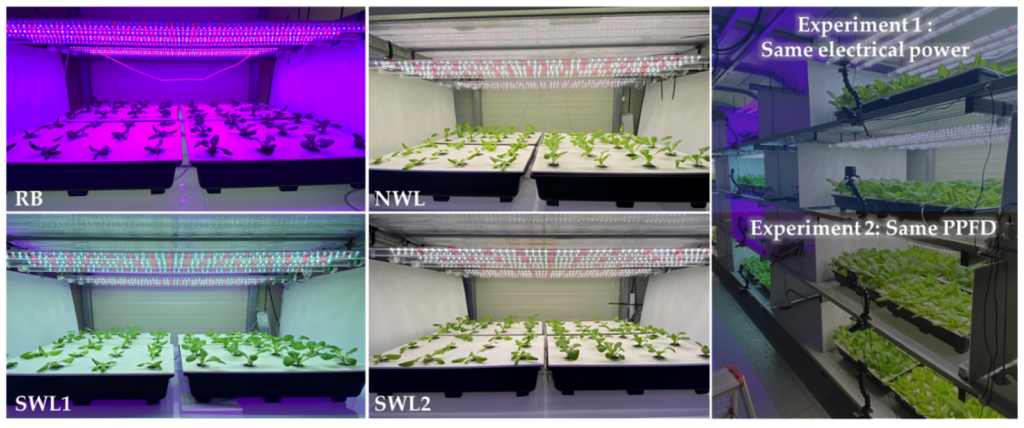
Light Cycle Manipulation for Growth Optimization
Shortened dark periods are redefining how growers approach light cycles. Research on lettuce cultivation shows that a 16-hour light/2-hour dark cycle can increase fresh weight by 30% compared to traditional 16-hour light/8-hour dark setups. This approach leverages the plant’s ability to maintain photosynthetic activity with minimal rest, effectively compressing growth timelines.
By alternating short bursts of high-intensity light with low-intensity periods near the light compensation point (LCP), growers can sustain optimal Daily Light Integral (DLI) while reducing energy costs. For example, a 5-hour light/1-hour LCP cycle has been shown to maintain yields without compromising plant health.
Longer light/dark cycles (e.g., 12/12 hours) can enhance photosynthetic capacity in some crops, suggesting that light cycle manipulation must be tailored to species-specific needs. This underscores the importance of integrating plant physiology insights into lighting strategies for maximum efficiency.
Integrating Smart Controls and Automation
By leveraging IoT-enabled sensors, growers can adjust light spectra in real time to match plant growth stages. For instance, increasing red wavelengths during flowering while maintaining blue light for vegetative growth has been shown to boost yields by up to 20%. This precision reduces energy waste and ensures plants receive exactly what they need, when they need it.
Integration with environmental controls amplifies these benefits. Systems that sync lighting with CO₂ levels and temperature can optimize photosynthesis efficiency. A case study on tomato greenhouses revealed that synchronizing light intensity with peak CO₂ availability increased fruit production by 15%, demonstrating the power of interconnected systems.
However, over-reliance on automation can lead to inefficiencies if not calibrated correctly. Regular data analysis and manual overrides ensure systems remain adaptive, offering a framework for balancing automation with human oversight.
Supplemental Lighting: Combining Technologies
Blending LED and HID lighting systems offers a nuanced approach to supplemental lighting. LEDs provide energy-efficient, targeted spectra, while HID lights deliver high-intensity output ideal for deep canopy penetration. This hybrid strategy ensures uniform light distribution, addressing the limitations of each technology when used in isolation.
In practice, growers often use LEDs for vegetative growth and HIDs during flowering. A study on indoor cannabis cultivation found that combining these technologies increased cannabinoid production by 18%, compared to using LEDs alone. The synergy lies in leveraging LEDs’ precision with HIDs’ intensity, creating an optimized growth environment.
HID lights generate significant heat, which can stress plants if not controlled. Integrating advanced cooling systems or reflective materials can mitigate this issue. By carefully balancing these technologies, growers can achieve higher yields while maintaining energy efficiency—a framework adaptable to various crops and scales.
Energy Conservation Techniques
By adjusting light intensity based on real-time plant needs, growers can significantly reduce energy waste. For instance, during early vegetative stages, plants require less light intensity, allowing dimmable LEDs to operate at lower power without compromising growth.
A 2023 study on smart lighting systems revealed that integrating dimming with environmental sensors reduced energy consumption by up to 40%. This approach not only cuts costs but also minimizes heat output, reducing the need for additional cooling systems. It results in a more sustainable and cost-effective setup.
To maximize efficiency, pairing dimming with reflective materials ensures optimal light distribution even at lower intensities. This technique challenges the traditional “more light equals better growth” mindset, proving that precision trumps excess. By adopting these strategies, growers can create scalable, energy-efficient systems tailored to specific crop requirements.
Maintenance and Troubleshooting
Regular maintenance is the backbone of a reliable grow light system. Dust accumulation on light diodes can reduce output by up to 30%, according to a 2022 study on LED efficiency. Cleaning your lights every three months with a microfiber cloth and isopropyl alcohol ensures maximum intensity and extends their lifespan. Think of it as cleaning a camera lens—clarity directly impacts performance.
Troubleshooting often begins with the basics: check for loose connections or damaged wiring. A common misconception is that flickering lights always indicate bulb failure. In reality, it’s often a sign of a faulty ballast or inconsistent power supply. Replacing a ballast, while intimidating, can restore functionality and prevent long-term damage.
Unexpectedly, environmental factors like humidity can also wreak havoc. Excess moisture corrodes components, leading to erratic performance. Installing dehumidifiers or waterproof fixtures mitigates this risk, ensuring your setup thrives in even the most challenging conditions.
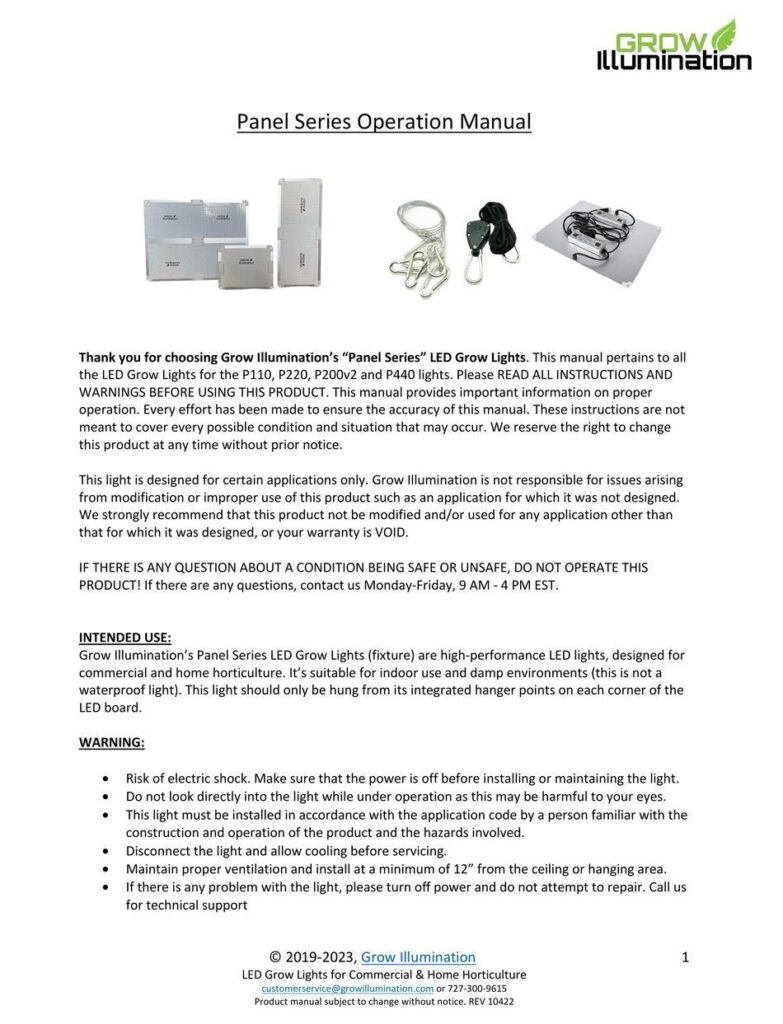
Routine Maintenance for Longevity
Dust and grime don’t just dim light output—they alter the spectrum, skewing the balance plants rely on for photosynthesis. A 2023 study found that even a thin layer of dust can reduce red light penetration by 15%, directly impacting flowering cycles. Regular cleaning with non-abrasive materials, like microfiber cloths, preserves both intensity and spectral accuracy.
LEDs are efficient, but poor ventilation can lead to overheating, degrading internal components over time. Installing small, silent fans or ensuring adequate airflow around fixtures can extend their lifespan by years. Think of it like maintaining a car engine—cooling is non-negotiable.
Checking for discoloration on lenses or loose wiring every quarter prevents minor issues from snowballing into costly repairs. Proactive care isn’t just maintenance—it’s an investment in consistent yields.
Diagnosing and Resolving Common Issues
While often dismissed as a minor annoyance, flickering can disrupt plant photoreceptors, leading to inconsistent growth. Frequently, it’s a failing LED driver or voltage instability. Testing the driver with a multimeter ensures it’s delivering consistent current. If voltage fluctuations are detected, installing a surge protector or voltage stabilizer can safeguard your system.
Over time, LEDs may shift from their original spectrum, particularly in cheaper models. This subtle change can reduce photosynthetic efficiency, especially in flowering plants. Regularly using a spectrometer to verify output ensures your lights remain within optimal ranges.
Excessive heat can degrade internal components, causing intermittent failures. Incorporating heat sinks or upgrading to active cooling systems can mitigate this. Proactive diagnostics not only resolve issues but also future-proof your setup for sustained performance.
Recognizing and Correcting Light Stress in Plants
High-intensity light can overwhelm chloroplasts, leading to photoinhibition and reduced photosynthetic efficiency. To counter this, gradually increase the distance between the grow light and the plant canopy, ensuring the PPFD (Photosynthetic Photon Flux Density) remains within the species-specific range. Using a quantum sensor to measure PPFD at the canopy level ensures precision.
Leaf curling occurs when plants attempt to reduce surface area exposed to excessive light. Implementing dimmable LED systems allows for fine-tuned intensity adjustments, minimizing stress while maintaining growth rates.
Light stress thresholds vary by plant species and growth stage. For instance, young seedlings are more sensitive than mature plants. By integrating adaptive lighting schedules—shorter photoperiods for seedlings and extended ones for flowering—you can optimize plant health and productivity.
Emerging Trends and Future Developments
The future of indoor grow lighting is being shaped by AI-driven optimization systems. These systems analyze real-time data—like plant growth rates and environmental conditions—to adjust light spectra and intensity dynamically. For example, a 2024 study by Wageningen University found that AI-managed lighting reduced energy consumption by 30% while increasing yields by 18%, proving its dual benefits of efficiency and productivity.
Another transformative trend is the rise of hybrid lighting systems. By combining LEDs with supplemental far-red or UV light sources, growers can fine-tune secondary metabolite production, enhancing flavor profiles in herbs or cannabinoid content in cannabis. This approach bridges the gap between energy efficiency and crop quality, offering a tailored solution for high-value crops.
Finally, biophilic design principles are influencing grow spaces, integrating natural aesthetics with advanced lighting. Think of it as merging science with art—creating environments that are not only functional but also visually inspiring, fostering innovation in urban agriculture.
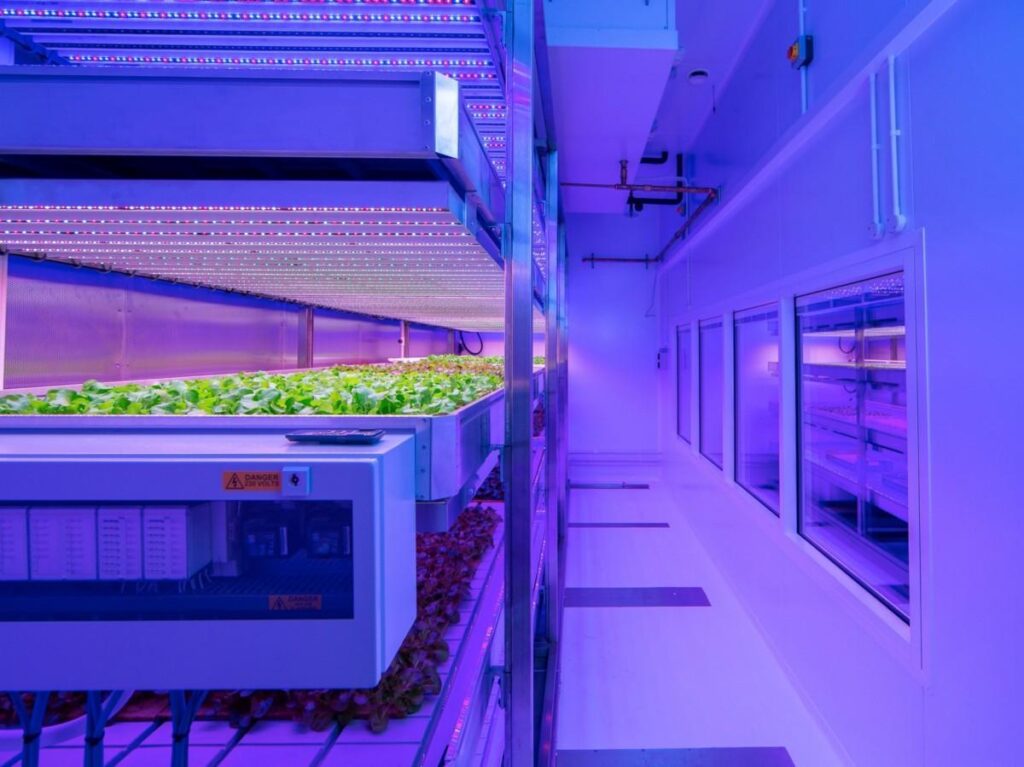
Advancements in LED Technology
One of the most groundbreaking advancements in LED technology is dynamic spectrum tuning, which allows growers to adjust light wavelengths in real time. This innovation enables precise control over plant morphology and secondary metabolite production. For instance, a study by the Kennedy Space Center demonstrated that shifting red-to-blue ratios during growth stages improved both biomass and nutrient density in spinach and peppers.
By positioning LEDs closer to plant canopies, growers can reduce light loss and improve photon capture efficiency. This approach not only minimizes energy waste but also enhances photosynthesis in lower-canopy leaves, a game-changer for dense vertical farms.
Efficiency droops at high temperatures. These LEDs maintain consistent output even in warm environments, ensuring reliable performance. Together, these advancements are redefining the boundaries of energy efficiency and crop quality.
Sustainable and Eco-Friendly Lighting Solutions
Solar-integrated LED systems combine energy-efficient LEDs with solar panels, creating a closed-loop system that drastically reduces reliance on grid electricity. For example, urban farms in California have adopted this approach, cutting energy costs by up to 60% while maintaining optimal light spectra for crops like lettuce and strawberries.
By incorporating high-reflectivity surfaces, growers can redirect unused photons back to plants, maximizing light utilization. This technique not only reduces energy waste but also enhances growth in shaded areas, making it ideal for vertical farming.
Lastly, biodegradable lighting components are emerging as a solution to reduce electronic waste. These materials, while still in development, promise to align indoor gardening with circular economy principles. Together, these approaches signal a shift toward truly sustainable cultivation practices.
The Role of AI and Automation in Grow Light Management
One transformative application of AI in grow light management is predictive light scheduling. By analyzing real-time data from sensors—such as PAR levels, temperature, and humidity—AI algorithms can dynamically adjust light intensity and spectra to match plant needs. For instance, a study on hydroponic lettuce showed a 20% increase in yield when AI-driven systems optimized light cycles based on growth stage data.
AI models trained on plant-specific responses to different wavelengths can fine-tune light spectra to enhance traits like flavor in herbs or nutrient density in leafy greens. This approach bridges horticulture with data science, offering precision previously unattainable.
AI systems can identify periods of natural light supplementation, reducing artificial light usage. These innovations not only improve productivity but also set the stage for fully autonomous, resource-efficient indoor farming systems.
FAQ About The Ultimate Grow Hack: Lights That Supercharge Plants
What are the key factors to consider when selecting grow lights?
Choose full-spectrum lights—blue for vegetative growth, red for flowering. Ensure proper intensity and coverage for your space. Opt for energy-efficient LEDs to reduce costs and heat output. Use adjustable fixtures for flexibility and durability.
How do different light spectra impact plant growth?
Blue light (400–500 nm) supports vegetative growth and strong roots. Red light (600–700 nm) boosts flowering and yields. Far-red (700–800 nm) accelerates flowering, while green (495–570 nm) penetrates deeper into canopies. UV light enhances flavors and colors.
What is the best way to set up grow lights for maximum efficiency?
Ensure even light distribution with Mylar or white walls. Use PAR meters to measure intensity. Position LEDs 27–50 inches above plants, HIDs farther. Automate schedules—16 hours for growth, 12 for flowering. Ventilation prevents overheating.
How do I calculate the right light intensity and duration?
Use a PAR meter to measure Photosynthetic Photon Flux Density (PPFD). Calculate DLI:
DLI = PPFD × hours of light × 0.0036
Adjust intensity—14–18 hours for vegetative growth, 12 hours for flowering.
What are the best practices for maintaining and troubleshooting grow lights?
Clean diodes and reflectors to prevent dust buildup. Inspect cables and connectors for damage. Check for flickering, dimming, or uneven light and replace faulty components. Improve ventilation to prevent overheating. Use PAR meters to ensure proper light output.
Conclusion
Think of indoor grow lights as the architects of your plant’s environment—designing every photon to meet specific needs. The right setup doesn’t just mimic sunlight; it tailors light intensity, spectrum, and duration to unlock a plant’s full potential. For instance, studies show that LED systems with adjustable spectra can increase flowering yields by up to 30% compared to static HID lights, proving that precision matters.
But here’s the twist: more light isn’t always better. Exceeding a plant’s Daily Light Integral (DLI) can stunt growth, much like overwatering a garden. Instead, balance is key. A case study on vertical farming revealed that inter-canopy lighting—placing lights within plant layers—boosted photosynthesis efficiency by 20%, a strategy often overlooked.
Finally, don’t underestimate maintenance. Cleaning diodes and monitoring spectrum drift ensures long-term performance. Indoor gardening isn’t just science; it’s an evolving art where every adjustment shapes the harvest.
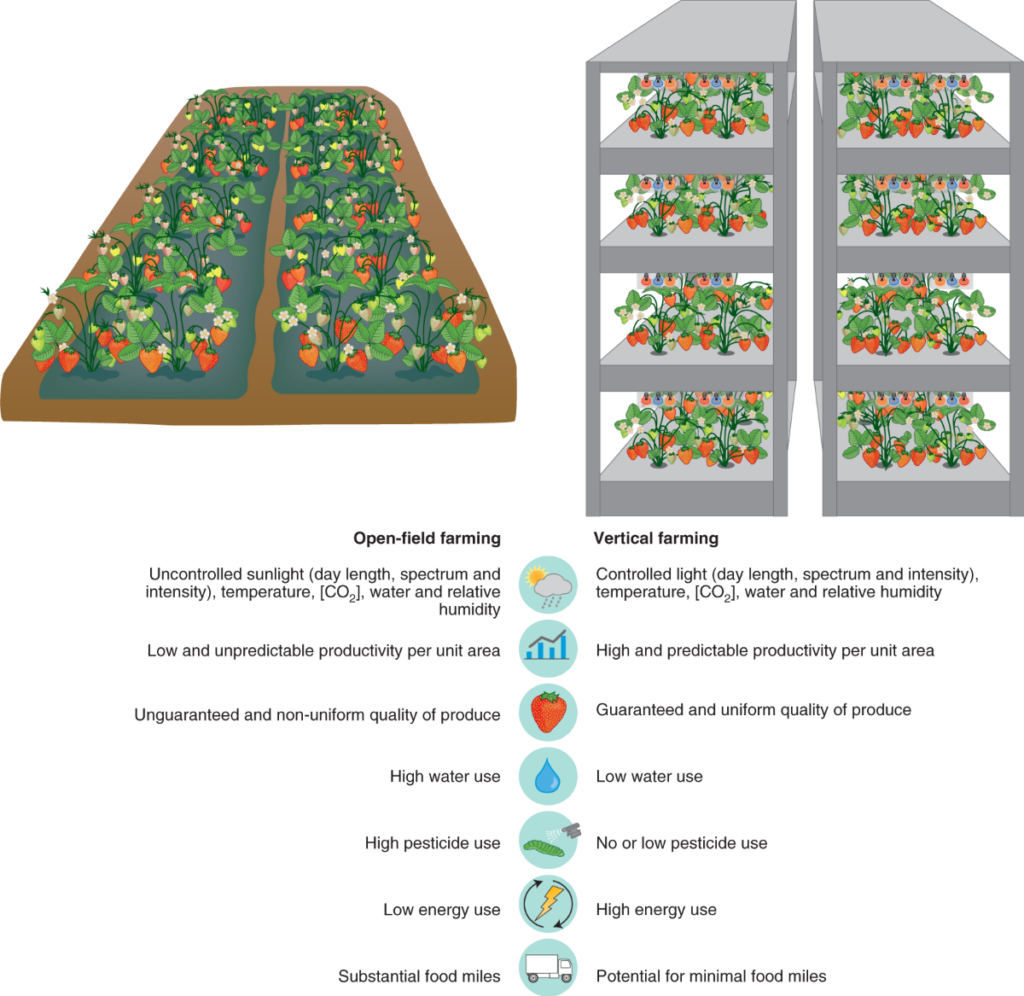
Related posts
![]()
About Michelle Wilde
Michelle Wilde is a stay-at-home mom and avid plant lover. Armed with a post-graduate degree in Computer Science (no kidding!), she loves researching plants and landscapes. When she is not caring for her 4 kids, she spends time on her passion for plants. She blogs at www.indoorplantschannel.com, the trusted source for indoor plants.
Learn more
Subscribe
* You will receive the latest posts and updates about indoor plants!
Search
Recent Posts
Categories
- Beginner Guides (10)
- FAQ (206)
- General (2)
- How-To Guides (212)
- Indoor Plants (214)
- Pest Management (2)
- Plant Problem Solutions (4)
- Seasonal Growing (2)
- Specialized Environments (2)
- Specific Plant Care (3)
- Technical Growing (2)
